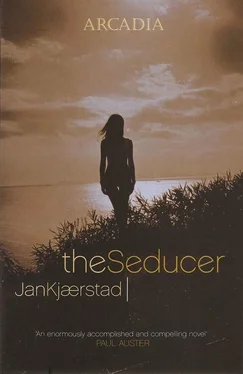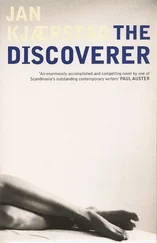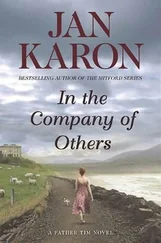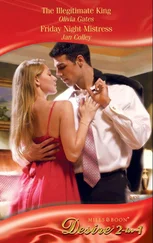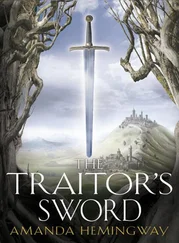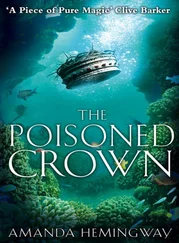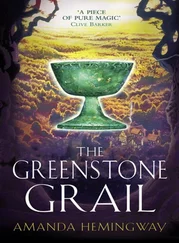After dinner, one of the week’s seven standard meals, which had been to some extent ruined by Daniel and his protests against reciting Kipling’s ‘If’ in the Midsummer’s Eve show, Jonas ran over to Number One to ask after Nefertiti. No, she hadn’t come home. Did Jonas have any idea where she was?
So back he went to the field, crawled under the fence and into the meadow with its lush green grass, where the cows lay or stood about in the warm afternoon light, looking like an advertisement for Freia milk chocolate or for Norway in general. It smelled of the Earth’s very own factory, of photosynthesis, of fermentation in bovine stomachs, of life, of summer, of holidays.
‘Isn’t it about time you were going home?’ he asked Nefertiti.
Nefertiti did not answer, she was still totally absorbed in the beetle, which appeared to be doing exactly the same as when Jonas had left it earlier in the day: slowly burrowing through muck, a task of Sisyphean dimensions, due to the fact that Nefertiti kept lifting away bits of dung with her stick, so as not to lose sight of it. She knelt on the red and white checked cloth as if it were a prayer mat, staring at the armour-plated beetle with such intensity that anyone would have thought she was trying to magnify each individual detail: the antennae, the grooves in the dorsal collar, the compound eyes, the teeth on its front legs, the stripes on the wing-cases. ‘Isn’t it amazing?’ she said again and, without taking her eyes off the beetle, motioned to Jonas to come down beside her.
Jonas lay down, eyed the lovely red wing-cases, saw how they gleamed softly. ‘What are you waiting for?’ he asked.
‘Look at it,’ was all she said. ‘Just look at it and let your thoughts run. I’m telling you, Jonas: this is a precious sight. Worth more than rubies.’
As so often before and later, Jonas Wergeland did not know that that day was to form one of the foundation-stones of his life, a day which was later to determine the values he set for himself. I have already mentioned Jonas Wergeland’s commitment to the Antarctic, and the way he celebrated Grotius Day, but I actually began at the wrong end of the causal chain, since this, his interest in the Antarctic was, of course, based in its turn on a set of values. And even though I did say that the values — or turtles, if you will — that we decide upon tend necessarily to be a bit of a lottery, nonetheless they are not always governed by such random forces as one might think. For when Jonas Wergeland reached the age at which he first tried to make sense of the wealth of quite indisputably solid social values, when it became simply a matter of helping oneself, for example, to ‘liberty’ or ‘equality’ or ‘solidarity’ or ‘tolerance’, he did not, in fact, feel as if he had had to pick his key value — the one overriding value that would help him to set the others in order of precedence — out of a hat, blindly as it were, because he had quite instinctively opted for ‘imagination’, thus setting this value above all others.
But what did imagination mean to Jonas Wergeland? Imagination was the first link in the ethical chain. To Jonas it seemed patently obvious that a weak imagination made for a weak individual. After all, it was no use choosing ‘liberty’ and ‘equality’ if one did not have the imaginative power to find ways and areas in which to put these values to use — and to balance one against another in those cases where they happened to clash. It was no good defending life, the weak, the individual, truth — whatever you wanted to call it — against the powers that be at any given time, if one had no fantasy. The fight for a stronger imagination was, therefore, the most important of all.
As far as Jonas Wergeland was concerned, protest was not about writing indignant pieces for the newspapers on all sorts of injustices. To him, it was about standing on Karl Johans gate and provoking people into using their imaginations. Which is why Jonas Wergeland inaugurated Michelangelo Day; every year on March 6, Michelangelo’s birthday, he walked up and down Karl Johans gate, handing out leaflets he had paid for out of his own pocket with such headlines as ‘Paint a Sistine Chapel’ or ‘When Did You Last Poke Fun At A Pope?’ or ‘Take A Day Off To Study The Veins In A Block Of Marble’. Jonas knew that everyone went around with great stores of knowledge and information in their heads; what he was endeavouring to do with these leaflets was to encourage them to use these creatively, shuffle the cards, form this abundant store of experiences into new chains of causality. Even if one only succeeded in getting people to alter the way in which they fantasized about things, it was bound to have important consequences. Even Marx knew that.
So even though Jonas Wergeland was well aware that the Earth abounded in causes that were crying out for a champion, and swarming with weak souls in need of a spokesman — all you had to do was take your pick — I hope you can see how Michelangelo Day and Grotius Day go hand in hand, just as aesthetics and ethics go hand in hand, and why Jonas should have thrown himself into the debate surrounding Antarctica, of all things. Because Antarctica is, of course, the continent of the imagination. This, the last wilderness on Earth is totally dependent on our imaginative powers. This vast ice-covered region is actually nothing but one gigantic blank page, rich in possibilities.
And it was on that warm June day in the grouchy, old farmer’s fields, surrounded by cud-chewing cows, daisies and timothy, that the idea of imagination as a value was sown in Jonas Wergeland’s mind, as he lay next to Nefertiti on a red and white checked cloth with his nose stuck almost right inside a cowpat.
They lay for a long time in silence. Jonas felt as if they were spying on the beetle’s banquet, as if they were intent on uncovering a great secret, that it was all a matter of being patient, as indefatigable as the beetle, crawling and burrowing and guzzling its heart out in a world of muck. The beetle’s upper side looked a little like a mask, a face.
‘ Aphodius fimetarius ,’ said Nefertiti. ‘A dung beetle. Belongs to the scarab family. You know, like “the sacred scarabé”, which was an object of religious worship in Egypt. Sometimes a figure in the shape of this beetle was laid over the hearts of the dead. The beetle is a symbol of eternal life.’
‘Is it rare?’ Jonas said, pointing to the red, softly gleaming wing-cases.
‘No, it’s very common,’ said Nefertiti and then she told him something about the dung beetle, that specialist in shit: that they were generally very fussy when it came to the consistency of the dung, or rather, its moisture content; some went for fresh dung, others liked the older stuff. And they all had their preferences, according to a sensible distribution of all the squalor in the world, for the excrement of different animals and different grades of dung. ‘But our friend fimetarius here can cope with the very driest cowpats, it’s about the only one that can. Just think, Jonas: it’s like a nomad in a desert of shit!’ Nefertiti was truly fascinated by these dung beetles, she knelt there, reverently, patiently explaining to Jonas how these creatures passed through every stage of their life cycle buried in muck. And what a digestive system! They could eat all night and all day, non-stop. They were refuse collectors, cleaning the Earth. Nefertiti looked at him from under the longest eyelashes in the world: ‘Isn’t that absolutely amazing, Jonas? Living off muck! Surviving in a world of shit! That’s what I call fantastic. Doesn’t it make you think big thoughts? Make you imagine the most inconceivable things?’
They straightened up. Nefertiti sat there looking at him for a long time, with eyes that were bluer than the sky on the longest, lightest day of the year then suddenly, although Jonas could see no reason for this, she pulled out her crystal and handed it to him. ‘This is for you,’ she said. ‘Remember that the imagination is also a path to knowledge and that includes knowledge that can be reached by any other paths.’
Читать дальше
